Testing bidding strategies with Google Ads experiments can help advertisers determine the most effective approach for achieving their advertising goals. Having a good understanding of the bidding strategy that works for your campaign can contribute to achieving a higher return on ad spend.
Before discussing using ad experiments to test diverse bidding strategies, let’s first explore the motives behind conducting these tests :
Optimize Performance: As mentioned, testing different bidding strategies can help you identify the most effective approach for achieving your advertising goals. By testing and analyzing results, you can optimize your bidding strategy to improve campaign performance and increase ROI.
Reduce Costs: Testing bidding strategies helps identify strategies that are more cost-effective yet impactful in achieving your campaign goals. If you can achieve positive outcomes at a lower cost, then that is a win-win situation.
Improve Targeting: Different bidding strategies work better for different target audiences. By testing different approaches, you can identify which strategies work best for specific audiences, and tailor your bidding strategy accordingly.
Increase Insights: Testing different bidding strategies can provide valuable insights into the behavior of your target audience, which can inform your overall marketing strategy and future campaigns
Improve existing campaign performance: If you are hesitant to try out a new bidding strategy for your campaign, especially if the current strategy has been delivering consistent results, conducting experiments can help alleviate your doubts and improve your campaign’s performance.
Having learned the significance of experiments in assessing bidding strategies, let’s now look at the steps involved in conducting such experiments.
Running experiments to test bidding strategy
1. To create an experiment, go to your Google Ads campaign and click on Experiments in the left side panel. Select All Experiments then click on the “plus” sign to start creating the experiments
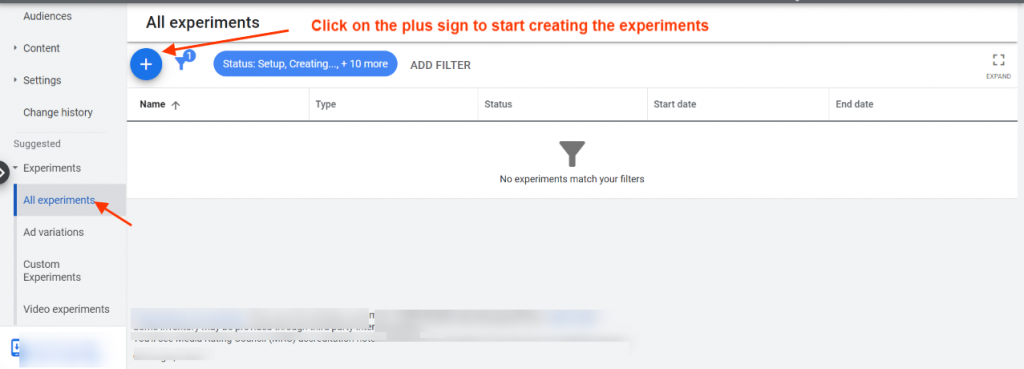
2. Click on custom experiments, and choose the campaign experiment. On the following page, give your experiment an appropriate name and select the base campaign that you wish to run an experiment on
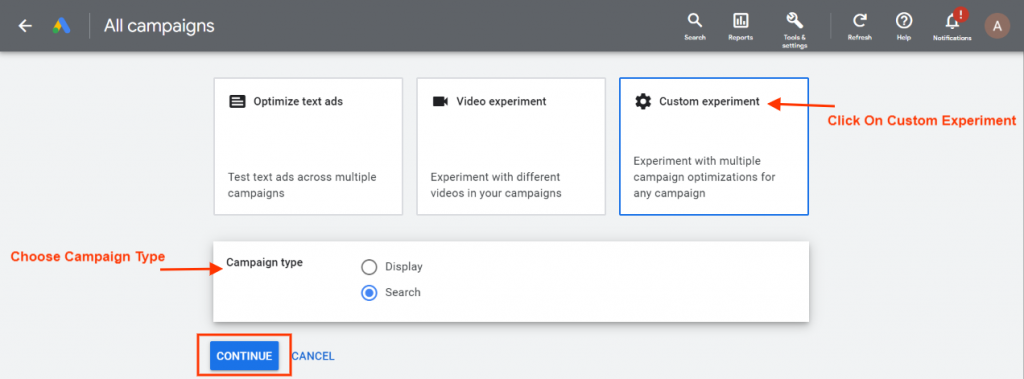
3. After saving the information, you will need to configure the experiment based on the parameters you wish to assess. In this case, we will choose ‘change bid strategy’.
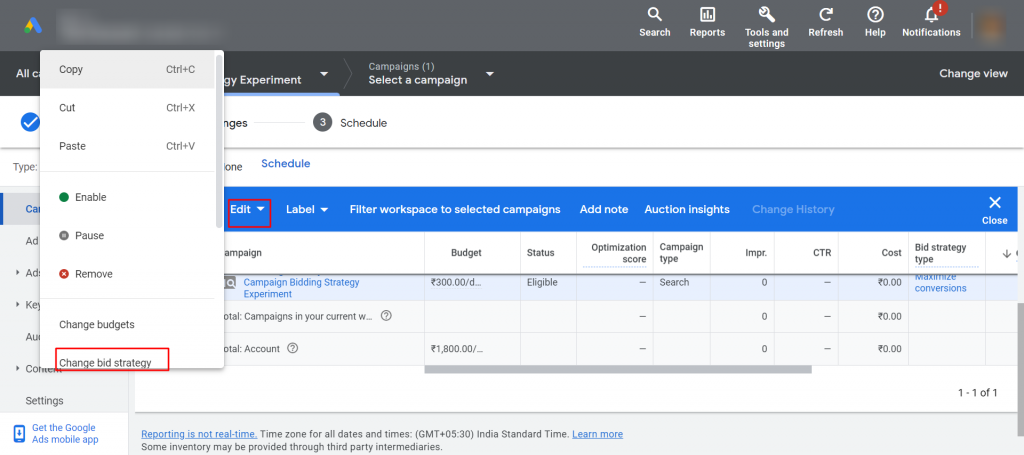
4. Choose the new bid strategy that you want to test
If there is anything else that you want to test along with the bid strategy then make those changes at this level. The next step is to schedule your experiment.
5. In the next step, select the goal that will help you define the success of your experiment. Add the other details in the subsequent fields; i.e, define the split percentage, set the experiment dates
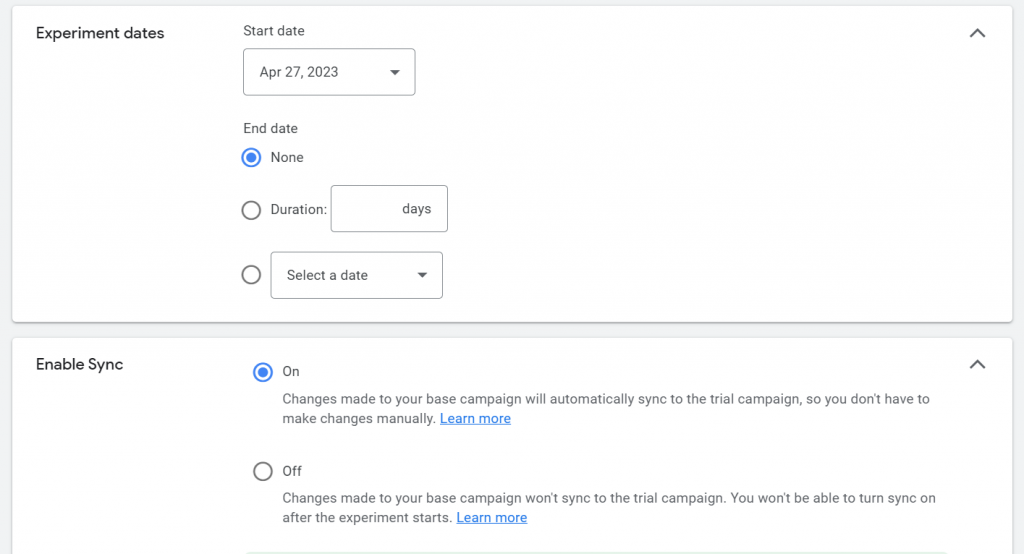
With these updates done, your experiment will start running on the date specified. In order to gain valuable insights from an experiment, it is recommended to allow a learning period of a minimum of two weeks after its launch. After this, the results will gradually increase and provide actionable insights to make informed decisions.
If your experiment group outperformed, you can apply your new bidding strategy to your entire campaign. If not, try testing a different bidding strategy in a new experiment. By testing bidding strategies in Google Ads experiments, you can make data-driven decisions that will help you optimize your campaigns and improve your return on investment (ROI).
Related Links:


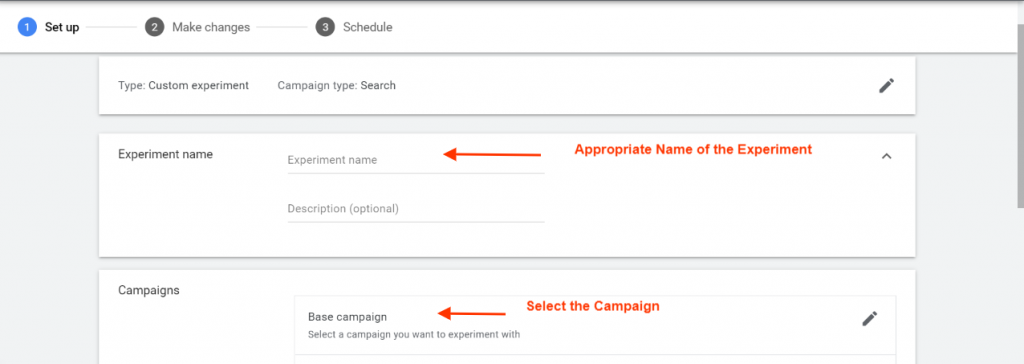
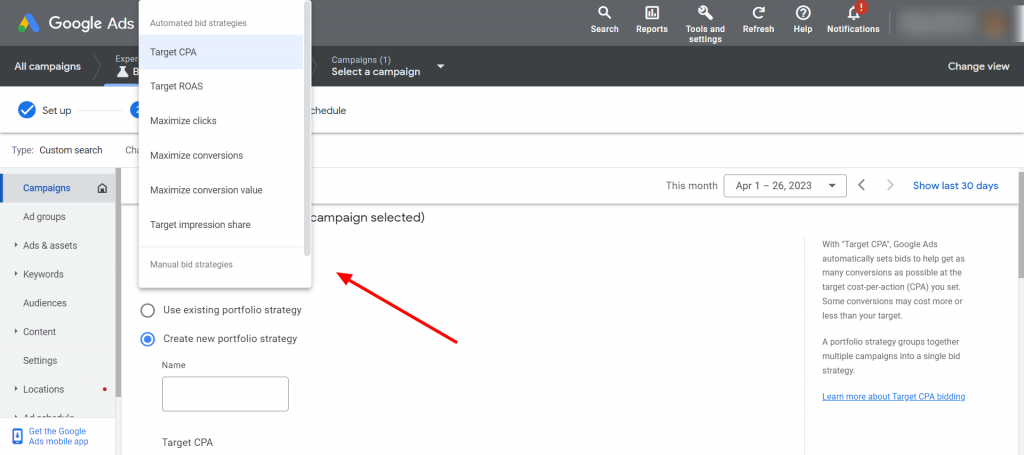
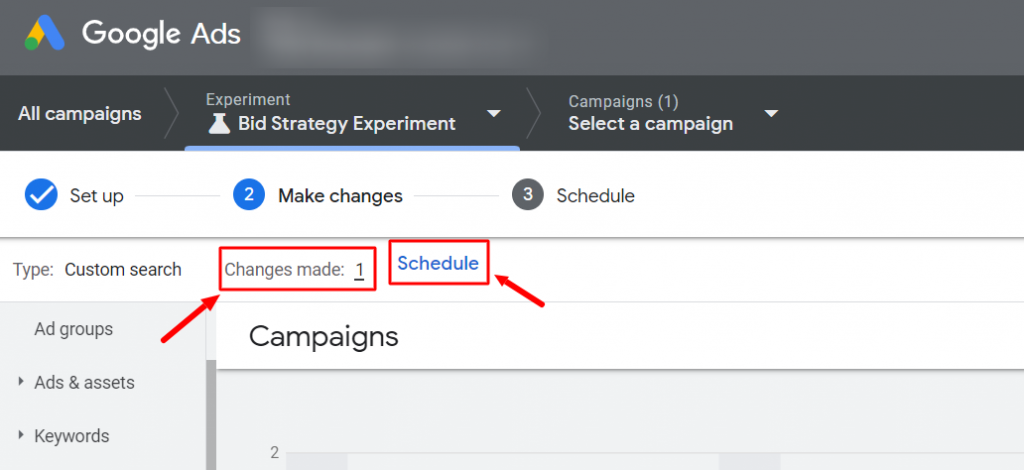
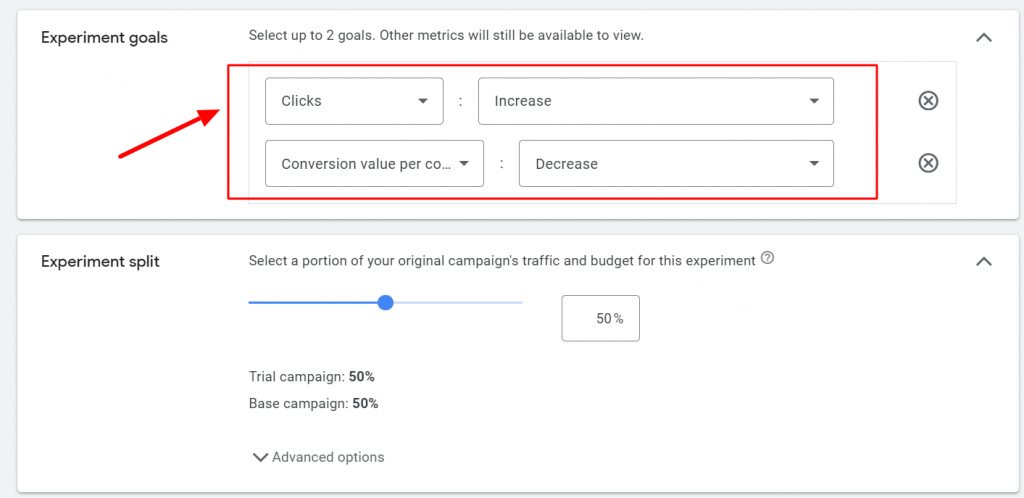




patrick grom
I have quite an interesting question about Ads experiments.
Currently I am running a campaign on the bidding strategy “maximize conversions” with a target CPA.
I want to test, if the bidding strategy “maximize conversion-value” with target ROAS produces more conversions in the end.
Just to make this clear: I dont care much about a higher or lower conversion-value. All I want is to test if I can generate more conversions with a different bidding strategy.
When I set up the experiment I have the option to choose “experiment goals” for example the metric “conversions” and if I this metric will increase, decrease or not change at all.
Here comes my question: do these experiment goals interfere with the changes I make in the campaign that I am doing this experiment?
In my specific example: I choose the metric “conversion” and that this metric will increase. Isn’t this contradictive if I want to test the bidding strategy “conversion value”?
Should I just not pick any experiment metrics that i want to increase/decrease?
What do you recommend?
Kirti
The selection of “Experimental Goals” will not impact the experiment’s results. The variable that you change, in this case the bidding strategy, will be the one that impacts performance of the experiment.